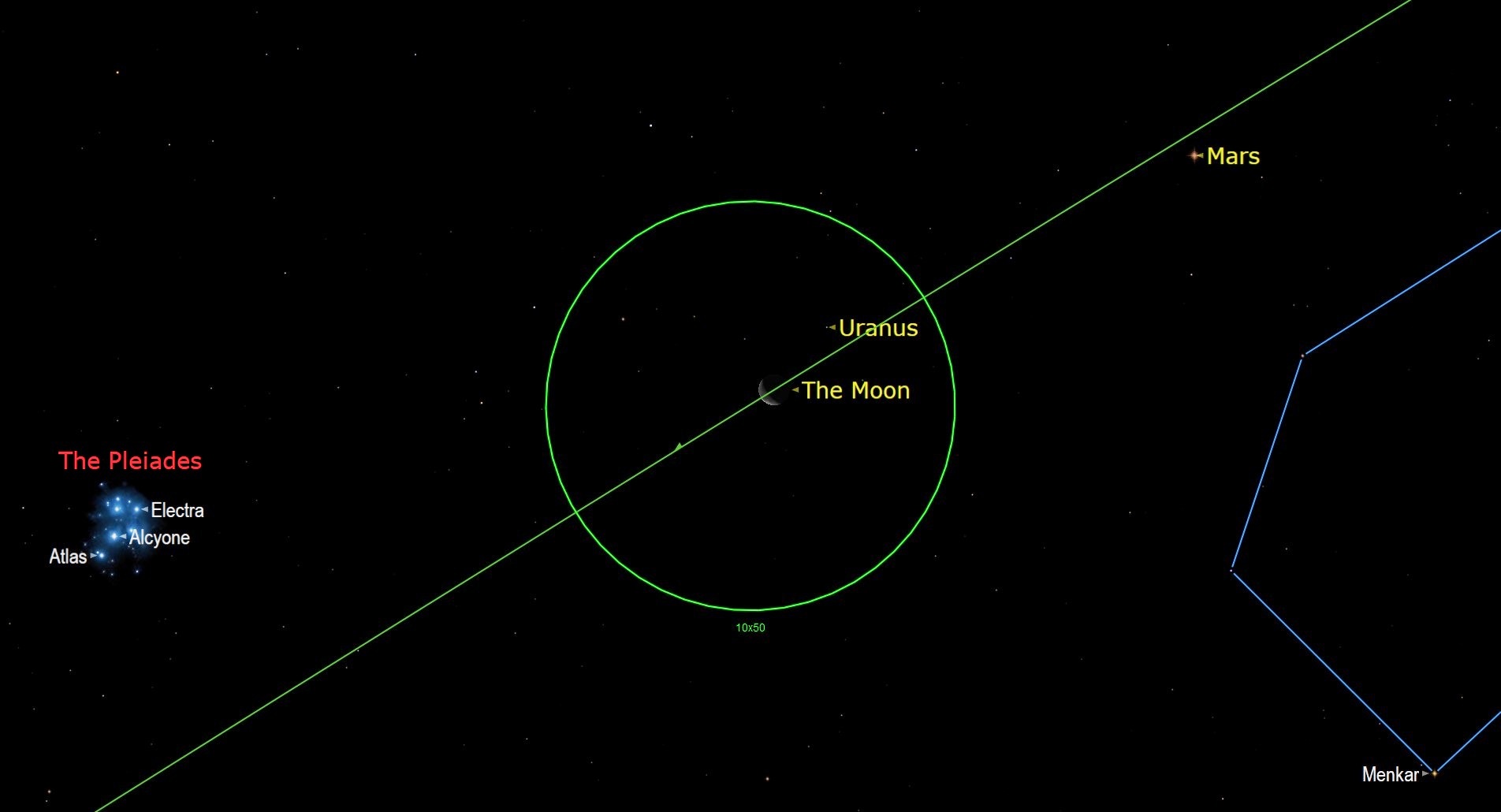Catch the moon pointing at Uranus on Friday
The duo will be close enough to share the same field of view in a pair of binoculars.

In the early hours of Friday (July 22), the waning crescent moon will be conveniently placed to guide you to the tiny, magnitude 5.8 dot that is Uranus.
(On the magnitude scale used by astronomers, lower numbers signify brighter objects. For example, at its brightest, the planet Venus shines with a magnitude of about -4.6.)
You'll be able to see the pair for about two hours before the sky begins to brighten according to astronomer Chris Vaughan of Astrogeo.ca, who prepares Space.com's monthly Night Sky calendar in cooperation with Simulation Curriculum.
During the encounter, Uranus and the moon will be close enough to share the same view in a pair of binoculars and will also be visible with backyard telescopes.
Related: The brightest planets in July's night sky: How to see them (and when)
"When the moon rises after 1 a.m. local time in the Eastern Time Zone, Uranus will be located a lunar diameter above (or celestial northwest of) the moon," Writes Vaughan. "The moon's eastward orbital motion (green line) will carry it steadily farther to Uranus' lower-left each hour, so observers looking later, and in more westerly time zones, will find Uranus up to 3 degrees from the moon."
The exact time of the event varies depending on your specific location, so you'll want to check out a skywatching app like SkySafari or software like Starry Night to check for times. Our picks for the best stargazing apps may help you with your planning.
Get the Space.com Newsletter
Breaking space news, the latest updates on rocket launches, skywatching events and more!
According to Vaughan, skywatchers situated from northeastern Brazil to the Cape Verde Islands and northwestern Africa will be able to see the moon occult Uranus at approximately 00:30 a.m. EDT (0430 GMT).
If you're looking for a telescope or binoculars to observe these skywatching targets, our guides for the best binoculars deals and the best telescope deals now can help. Our best cameras for astrophotography and best lenses for astrophotography can also help you prepare to capture the next skywatching sight on your own.

Looking for a telescope for the next stargazing event? We recommend the Celestron Astro Fi 102 as the top pick in our best beginner's telescope guide.
The moon is approaching the end of its monthly planetary tour. After swinging by Uranus on Friday (July 22) it will call in on Venus on July 26 and then wrap things up with Mercury on July 29.
If you'd like to take a more in-depth look at our rocky companion our ultimate guide to observing the moon will help you plan your next skywatching venture whether it be exploring the lunar seas, mountainous terrain, or the many craters that blanket the landscape. You can also see where astronauts, rovers and landers have ventured with our Apollo landing sites observing guide.
Follow us on Twitter @Spacedotcom and Facebook.
Join our Space Forums to keep talking space on the latest missions, night sky and more! And if you have a news tip, correction or comment, let us know at: community@space.com.

Daisy Dobrijevic joined Space.com in February 2022 having previously worked for our sister publication All About Space magazine as a staff writer. Before joining us, Daisy completed an editorial internship with the BBC Sky at Night Magazine and worked at the National Space Centre in Leicester, U.K., where she enjoyed communicating space science to the public. In 2021, Daisy completed a PhD in plant physiology and also holds a Master's in Environmental Science, she is currently based in Nottingham, U.K. Daisy is passionate about all things space, with a penchant for solar activity and space weather. She has a strong interest in astrotourism and loves nothing more than a good northern lights chase!









